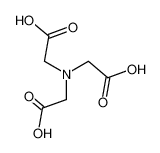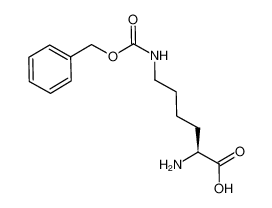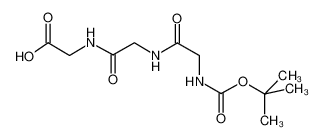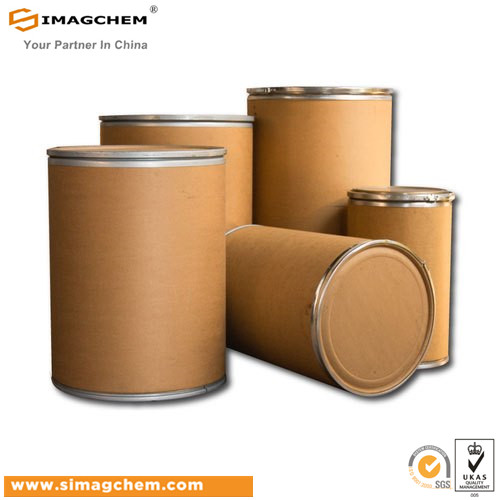1.Identification
1.1 GHS Product identifier
| Product name | nitrilotriacetic acid |
|---|
1.2 Other means of identification
| Product number | - |
|---|---|
| Other names | Nitrilotriacetic Acid |
1.3 Recommended use of the chemical and restrictions on use
| Identified uses | For industry use only. |
|---|---|
| Uses advised against | no data available |
1.4 Supplier's details
| Company | MOLBASE (Shanghai) Biotechnology Co., Ltd. |
|---|---|
| Address | Floor 4 & 5, Building 12, No. 1001 North Qinzhou Road, Xuhui District, Shanghai, China |
| Telephone | +86(21)64956998 |
| Fax | +86(21)54365166 |
1.5 Emergency phone number
| Emergency phone number | +86-400-6021-666 |
|---|---|
| Service hours | Monday to Friday, 9am-5pm (Standard time zone: UTC/GMT +8 hours). |
2.Hazard identification
2.1 Classification of the substance or mixture
Eye irritation, Category 2A
Carcinogenicity, Category 2
2.2 GHS label elements, including precautionary statements
| Pictogram(s) |  |
|---|---|
| Signal word | Warning |
| Hazard statement(s) | H319 Causes serious eye irritation H351 Suspected of causing cancer |
| Precautionary statement(s) | |
| Prevention | P264 Wash ... thoroughly after handling. P280 Wear protective gloves/protective clothing/eye protection/face protection. P201 Obtain special instructions before use. P202 Do not handle until all safety precautions have been read and understood. |
| Response | P305+P351+P338 IF IN EYES: Rinse cautiously with water for several minutes. Remove contact lenses, if present and easy to do. Continue rinsing. P337+P313 If eye irritation persists: Get medical advice/attention. P308+P313 IF exposed or concerned: Get medical advice/ attention. |
| Storage | P405 Store locked up. |
| Disposal | P501 Dispose of contents/container to ... |
2.3 Other hazards which do not result in classification
none
3.Composition/information on ingredients
3.1 Substances
| Chemical name | Common names and synonyms | CAS number | EC number | Concentration |
|---|---|---|---|---|
| nitrilotriacetic acid | nitrilotriacetic acid | 139-13-9 | none | 100% |
4.First-aid measures
4.1 Description of necessary first-aid measures
General advice
Consult a physician. Show this safety data sheet to the doctor in attendance.
If inhaled
Fresh air, rest.
In case of skin contact
Remove contaminated clothes. Rinse and then wash skin with water and soap.
In case of eye contact
First rinse with plenty of water for several minutes (remove contact lenses if easily possible), then refer for medical attention.
If swallowed
Rinse mouth. Give one or two glasses of water to drink.
4.2 Most important symptoms/effects, acute and delayed
Toxicity and health hazard of these compounds are low. Contact with eyes causes irritation. (USCG, 1999)
4.3 Indication of immediate medical attention and special treatment needed, if necessary
Immediate first aid: Ensure that adequate decontamination has been carried out. If patient is not breathing, start artificial respiration, preferably with a demand-valve resuscitator, bag-valve-mask device, or pocket mask, as trained. Perform CPR as necessary. Immediately flush contaminated eyes with gently flowing water. Do not induce vomiting. If vomiting occurs, lean patient forward or place on left side (head-down position, if possible) to maintain an open airway and prevent aspiration. Keep patient quiet and maintain normal body temperature. Obtain medical attention. /Organic acids and related compounds/
5.Fire-fighting measures
5.1 Extinguishing media
Suitable extinguishing media
This chemical is a combustible solid. Use dry chemical, carbon dioxide, water spray, or alcohol foam extinguishers.
5.2 Specific hazards arising from the chemical
Flash point data for this chemical are not available; however, it is probably combustible.
5.3 Special protective actions for fire-fighters
Wear self-contained breathing apparatus for firefighting if necessary.
6.Accidental release measures
6.1 Personal precautions, protective equipment and emergency procedures
Use personal protective equipment. Avoid dust formation. Avoid breathing vapours, mist or gas. Ensure adequate ventilation. Evacuate personnel to safe areas. Avoid breathing dust. For personal protection see section 8.
6.2 Environmental precautions
Personal protection: particulate filter respirator adapted to the airborne concentration of the substance. Do NOT let this chemical enter the environment. Sweep spilled substance into covered containers. If appropriate, moisten first to prevent dusting. Carefully collect remainder. Then store and dispose of according to local regulations.
6.3 Methods and materials for containment and cleaning up
This study used acidity, ethylenediaminetetracetic acid and nitrilotriacetic acid treatment processes to explore the removal efficiencies of heavy metals from urban and industrial sludges. The results indicate that the optimum treatment efficiencies of heavy metals extraction from sludge are related to the species of heavy metals in sludge, dosage of extractants and the reaction time. The removal efficiency of a three stage countercurrent process was higher than those of single stage processes... The cost of the acid treatment process per unit weight of heavy metal extracted was lowest in conditions of high heavy metal concentrations, but the ethylenedinitrilotetraacetic process was the cheapest with low heavy metal concentrations.
7.Handling and storage
7.1 Precautions for safe handling
Avoid contact with skin and eyes. Avoid formation of dust and aerosols. Avoid exposure - obtain special instructions before use.Provide appropriate exhaust ventilation at places where dust is formed. For precautions see section 2.2.
7.2 Conditions for safe storage, including any incompatibilities
Separated from strong oxidants and strong bases. Well closed.Store in a refrigerator or in a cool, dry place.
8.Exposure controls/personal protection
8.1 Control parameters
Occupational Exposure limit values
no data available
Biological limit values
no data available
8.2 Appropriate engineering controls
Handle in accordance with good industrial hygiene and safety practice. Wash hands before breaks and at the end of workday.
8.3 Individual protection measures, such as personal protective equipment (PPE)
Eye/face protection
Safety glasses with side-shields conforming to EN166. Use equipment for eye protection tested and approved under appropriate government standards such as NIOSH (US) or EN 166(EU).
Skin protection
Wear impervious clothing. The type of protective equipment must be selected according to the concentration and amount of the dangerous substance at the specific workplace. Handle with gloves. Gloves must be inspected prior to use. Use proper glove removal technique(without touching glove's outer surface) to avoid skin contact with this product. Dispose of contaminated gloves after use in accordance with applicable laws and good laboratory practices. Wash and dry hands. The selected protective gloves have to satisfy the specifications of EU Directive 89/686/EEC and the standard EN 374 derived from it.
Respiratory protection
Wear dust mask when handling large quantities.
Thermal hazards
no data available
9.Physical and chemical properties
| Physical state | white powder |
|---|---|
| Colour | Prismatic crystals from hot water |
| Odour | no data available |
| Melting point/ freezing point | -18°C(lit.) |
| Boiling point or initial boiling point and boiling range | 134°C/1mmHg(lit.) |
| Flammability | Combustible under specific conditions. Gives off irritating or toxic fumes (or gases) in a fire. |
| Lower and upper explosion limit / flammability limit | no data available |
| Flash point | 100°C |
| Auto-ignition temperature | no data available |
| Decomposition temperature | 242°C |
| pH | pH of saturated aqueous solution = 2.3 |
| Kinematic viscosity | no data available |
| Solubility | In water:Insoluble. |
| Partition coefficient n-octanol/water (log value) | -3.8 |
| Vapour pressure | 7X10-9 mm Hg at 25°C (est) |
| Density and/or relative density | 1.61 g/cm3 |
| Relative vapour density | no data available |
| Particle characteristics | no data available |
10.Stability and reactivity
10.1 Reactivity
no data available
10.2 Chemical stability
Stable under recommended storage conditions.
10.3 Possibility of hazardous reactions
Dust explosion possible if in powder or granular form, mixed with air.NITRILOTRIACETIC ACID is incompatible with strong oxidizers, aluminum, copper, copper alloy and nickel. It is also incompatible with strong bases.
10.4 Conditions to avoid
no data available
10.5 Incompatible materials
... Violent reaction with strong bases.
10.6 Hazardous decomposition products
When heated to decomposition it emits toxic fumes of /nitrogen oxides/.
11.Toxicological information
Acute toxicity
- Oral: LD50 Mouse oral 3160 mg/kg
- Inhalation: no data available
- Dermal: no data available
Skin corrosion/irritation
no data available
Serious eye damage/irritation
no data available
Respiratory or skin sensitization
no data available
Germ cell mutagenicity
no data available
Carcinogenicity
Evaluation: There is inadequate evidence in humans for the carcinogenicity of nitrilotriacetic acid and its salts. There is sufficient evidence in experimental animals for the carcinogenicity of nitrilotriacetic acid and its sodium salts. Overall evaluation: Nitrilotriacetic acid and its salts are possibly carcinogenic in humans (Group 2B).
Reproductive toxicity
no data available
STOT-single exposure
no data available
STOT-repeated exposure
no data available
Aspiration hazard
no data available
12.Ecological information
12.1 Toxicity
- Toxicity to fish: no data available
- Toxicity to daphnia and other aquatic invertebrates: LC50; Species: Daphnia magna (Water Flea) age < or = 24 hr; Conditions: freshwater, static, 20-22°C, pH 7.6-7.7; Concentration: 950000 ug/L for 24 hr /formulation
- Toxicity to algae: no data available
- Toxicity to microorganisms: no data available
12.2 Persistence and degradability
AEROBIC: In a river die-away study using Ruhr River water from Germany, nitrilotriacetic acid biodegradation rate constants of 0.30/day (25°C) and 0.07/day (2°C) were measured which correspond to respective half-lives of 2.3 and 9.9 days(1). In a die-away test Ohio River water, 100% degradation was observed after 12-14 days of incubation which included an 8-10 day lag period(2). In aerobic die-away tests using Detroit and Meramec River water, 100% degradation was observed after 3-15 days of incubation(3). In river die-away tests using river water from both upstream and downstream of the Heath, OH treatment plant, 100% degradation occurred within 10 days in the downstream water and within 16 days in the upstream water(4). In die-away tests using freshwater-sediment from Hamilton Harbor, Lake Erie, 100% degradation occurred in 3-11 days of incubation at input concentrations of 1-12 ppm(5). In CO2 evolution tests using river water inocula from various sites (Fukushima, Japan; Perkinsville, IN; Brantford, Ontario; Cincinnati, OH) located downstream from treatment plants and low concentrations of nitrilotriacetic acid (0.001-1 ppm), rate constants ranging from 0.12 to 1.28/day were measured which correspond to half-lives of 0.54 to 5.8 days(6). Nitrilotriacetic acid was rapidly degraded in river die-away studies using Grand River (Ontario, Can) water and Ohio River water(7); half-lives in the Grand River water ranged from 0.34-0.64 days while the Ohio River water had a 15-day CO2 evolution of 90%(7). Mineralization of nitrilotriacetic acid in Cayuga Lake water (Ithaca, NY) was 90% or greater in 20 days of incubation at concentrations of 1 ug/mL and 10 ng/mL(8); however, at 0.1 ng/L, mineralization was much slower (about 15% in 60 days)(8).
12.3 Bioaccumulative potential
BCFs of <9 to 24 and 109 were measured in carp (Cyprinus carpio) exposed for 28 days at nitrilotriacetic acid concentrations of 3 and 0.3 mg/L, respectively(1). According to a classification scheme(2), these BCFs suggest the potential for bioconcentration in aquatic organisms is low to moderate(SRC).
12.4 Mobility in soil
The Koc of nitrilotriacetic acid is estimated as <286(SRC), using a measured Kd value of <10 in a creek sediment containing 3.5% organic carbon(1). According to a classification scheme(2), this Koc suggests that nitrilotriacetic acid is expected to have high to moderate mobility in soil(SRC). Soil Rf values of 0.33-0.41 that were measured by thin-layer chromatography also suggest moderate to high soil mobility of nitrilotriacetic acid(3). Nitrilotriacetic acid had a reported Kd of 0.3 giving a half-life of 5 days(4). The pKa1 of nitrilotriacetic acid is 3.03(5), indicating that this compound will exist almost entirely in anion form in the environment and anions generally do not adsorb more strongly to soils containing organic carbon and clay than their neutral counterparts(6).
12.5 Other adverse effects
no data available
13.Disposal considerations
13.1 Disposal methods
Product
The material can be disposed of by removal to a licensed chemical destruction plant or by controlled incineration with flue gas scrubbing. Do not contaminate water, foodstuffs, feed or seed by storage or disposal. Do not discharge to sewer systems.
Contaminated packaging
Containers can be triply rinsed (or equivalent) and offered for recycling or reconditioning. Alternatively, the packaging can be punctured to make it unusable for other purposes and then be disposed of in a sanitary landfill. Controlled incineration with flue gas scrubbing is possible for combustible packaging materials.
14.Transport information
14.1 UN Number
| ADR/RID: Not dangerous goods. | IMDG: Not dangerous goods. | IATA: Not dangerous goods. |
14.2 UN Proper Shipping Name
| ADR/RID: unknown |
| IMDG: unknown |
| IATA: unknown |
14.3 Transport hazard class(es)
| ADR/RID: Not dangerous goods. | IMDG: Not dangerous goods. | IATA: Not dangerous goods. |
14.4 Packing group, if applicable
| ADR/RID: Not dangerous goods. | IMDG: Not dangerous goods. | IATA: Not dangerous goods. |
14.5 Environmental hazards
| ADR/RID: no | IMDG: no | IATA: no |
14.6 Special precautions for user
no data available
14.7 Transport in bulk according to Annex II of MARPOL 73/78 and the IBC Code
no data available
15.Regulatory information
15.1 Safety, health and environmental regulations specific for the product in question
| Chemical name | Common names and synonyms | CAS number | EC number |
|---|---|---|---|
| nitrilotriacetic acid | nitrilotriacetic acid | 139-13-9 | none |
| European Inventory of Existing Commercial Chemical Substances (EINECS) | Listed. | ||
| EC Inventory | Listed. | ||
| United States Toxic Substances Control Act (TSCA) Inventory | Listed. | ||
| China Catalog of Hazardous chemicals 2015 | Not Listed. | ||
| New Zealand Inventory of Chemicals (NZIoC) | Listed. | ||
| Philippines Inventory of Chemicals and Chemical Substances (PICCS) | Listed. | ||
| Vietnam National Chemical Inventory | Listed. | ||
| Chinese Chemical Inventory of Existing Chemical Substances (China IECSC) | Listed. | ||
16.Other information
Information on revision
| Creation Date | Aug 10, 2017 |
|---|---|
| Revision Date | Aug 10, 2017 |
Abbreviations and acronyms
- CAS: Chemical Abstracts Service
- ADR: European Agreement concerning the International Carriage of Dangerous Goods by Road
- RID: Regulation concerning the International Carriage of Dangerous Goods by Rail
- IMDG: International Maritime Dangerous Goods
- IATA: International Air Transportation Association
- TWA: Time Weighted Average
- STEL: Short term exposure limit
- LC50: Lethal Concentration 50%
- LD50: Lethal Dose 50%
- EC50: Effective Concentration 50%
References
- IPCS - The International Chemical Safety Cards (ICSC), website: http://www.ilo.org/dyn/icsc/showcard.home
- HSDB - Hazardous Substances Data Bank, website: https://toxnet.nlm.nih.gov/newtoxnet/hsdb.htm
- IARC - International Agency for Research on Cancer, website: http://www.iarc.fr/
- eChemPortal - The Global Portal to Information on Chemical Substances by OECD, website: http://www.echemportal.org/echemportal/index?pageID=0&request_locale=en
- CAMEO Chemicals, website: http://cameochemicals.noaa.gov/search/simple
- ChemIDplus, website: http://chem.sis.nlm.nih.gov/chemidplus/chemidlite.jsp
- ERG - Emergency Response Guidebook by U.S. Department of Transportation, website: http://www.phmsa.dot.gov/hazmat/library/erg
- Germany GESTIS-database on hazard substance, website: http://www.dguv.de/ifa/gestis/gestis-stoffdatenbank/index-2.jsp
- ECHA - European Chemicals Agency, website: https://echa.europa.eu/




















-
-

-
-
-

-
-
-

-
-
-

-
-
-

-
-
-

-
-
-

-
-
-

-
-
-

-
-
-

-
More Suppliers>>Wenzhou Win-Win Chemical Co., Ltd.
CHINA
Purity: 98%
Lead Time: 3 Day(s)
Price: -
Hangzhou J&H Chemical Co., Ltd.
CHINA
Purity: 98%
Lead Time: 7 Day(s)
Price: -
Baoji Guokang Bio-Technology Co., Ltd
CHINA
Purity: 99%
Lead Time: 5 Day(s)
Price: -
Xiamen Zhixin Chemical Co., Ltd.
CHINA
Purity: 99%
Lead Time: 3 Day(s)
Price: -
Skyrun Industrial Co., Limited
CHINA
Purity: 99%
Lead Time: 7 Day(s)
Price: -
Henan Coreychem Co.,Ltd
CHINA
Purity: Corey%
Lead Time: 3 Day(s)
Price: -
Shanghai Jizhi Biochemical Technology Co., Ltd.
CHINA
Purity: 98.5%
Lead Time: 1 Week(s)
Price: -
Hangzhou DayangChem Co., Ltd
CHINA
Purity: 98%
Lead Time: 7 Day(s)
Price: -
Hangzhou Shangjie Chemical Co., Ltd.
CHINA
Purity: 98%
Lead Time: 7 Day(s)
Price: -
Skyrun Industrial Co., Limited
CHINA
Purity: 99%
Lead Time: 7 Day(s)
Price: -